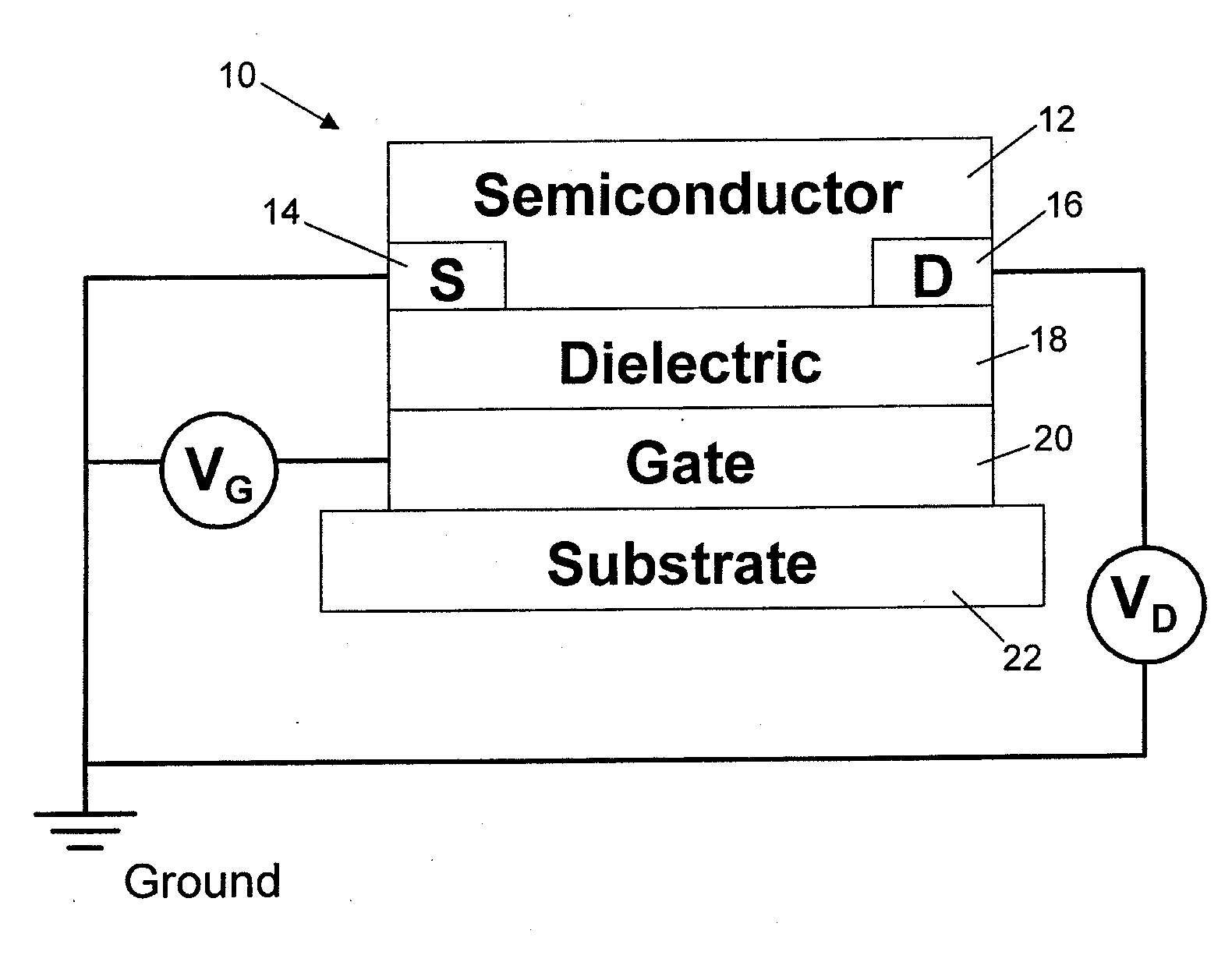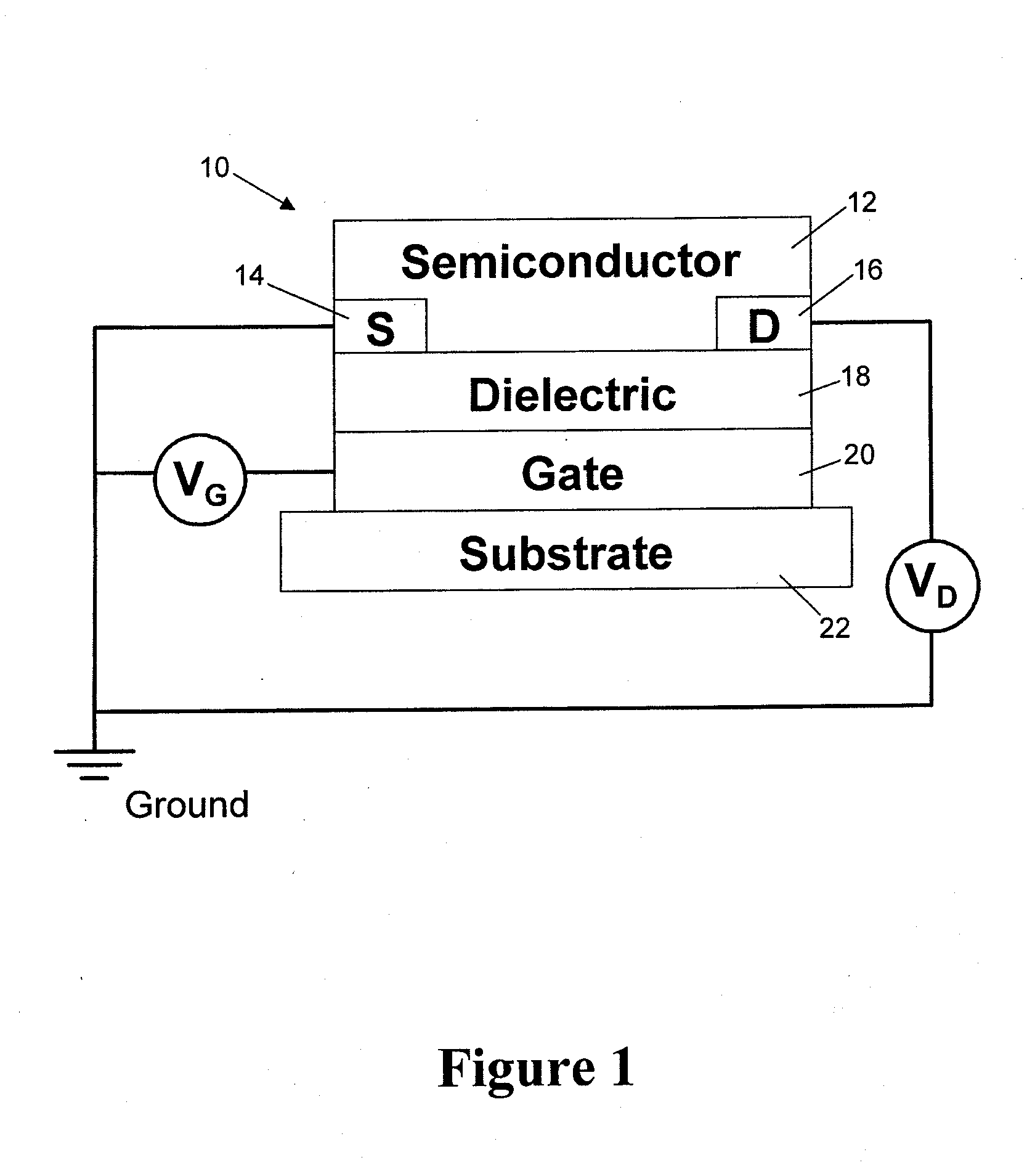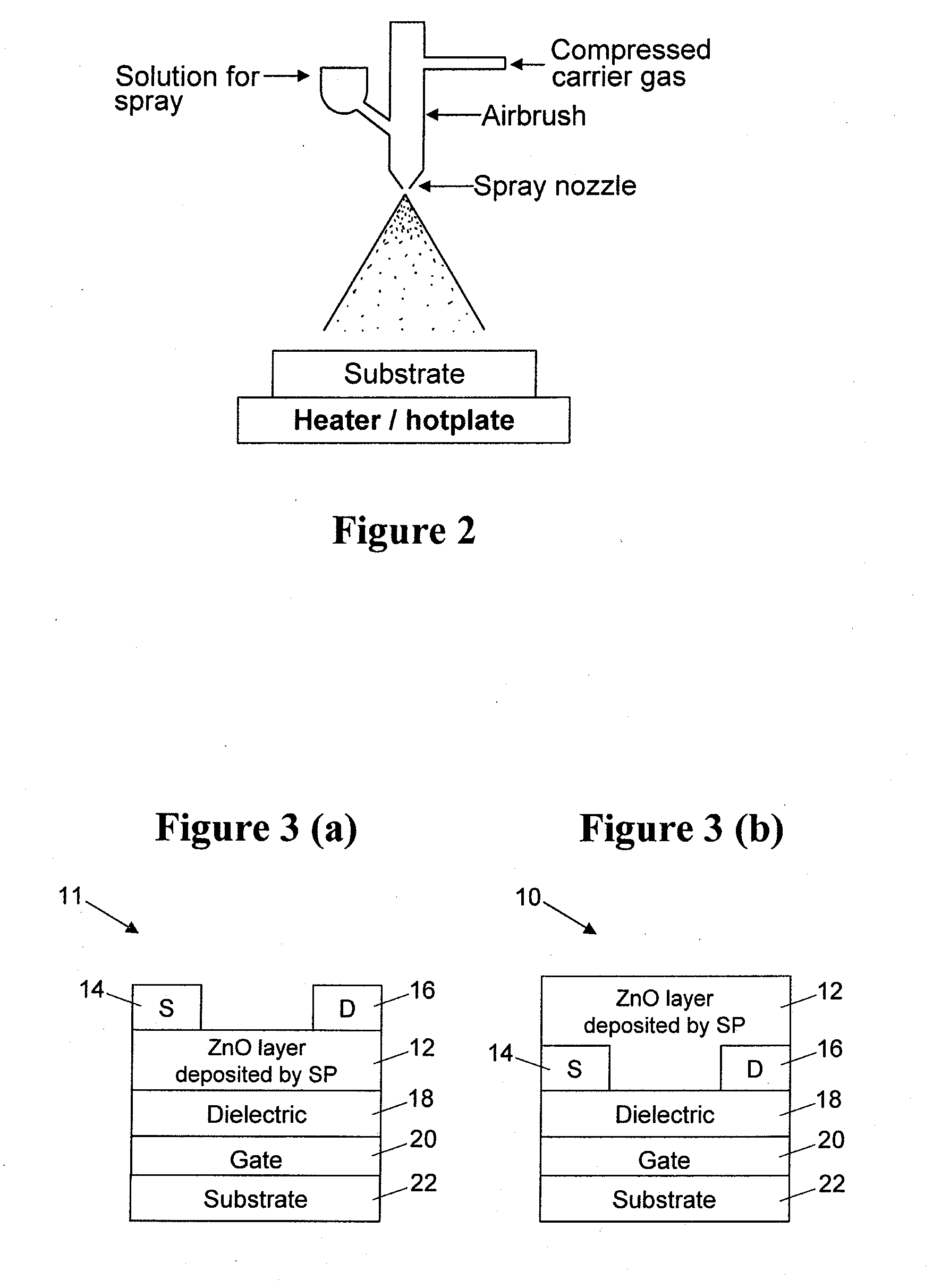Low-voltage thin-film field-effect transistors
a field-effect transistor and low-voltage thin-film technology, applied in the direction of instruments, electrical equipment, material analysis, etc., can solve the problems of limiting the range of potential applications, high operating voltage of solution-processed tfts incorporating either organic/polymeric or inorganic semiconductors, and the cost of solution-processing of semiconductor and/or gate dielectric layers, etc., to facilitate fabrication of tft, increase the geometrical capacitance of the transistor channel
- Summary
- Abstract
- Description
- Claims
- Application Information
AI Technical Summary
Benefits of technology
Problems solved by technology
Method used
Image
Examples
Embodiment Construction
[0056]The present embodiments represent the best ways known to the applicants of putting the invention into practice. However, they are not the only ways in which this can be achieved.
[0057]By way of introduction, as illustrated in FIG. 1, a conventional bottom-gate bottom-contact TFT device 10 consists of a semiconducting active layer 12 applied onto a three-terminal electrode architecture comprising a source electrode 14, a drain electrode 16 and a gate electrode 20. The gate electrode 20 is separated from the semiconductor layer 12 and the source and drain electrodes by a dielectric layer 18.
[0058]In embodiments of the present invention, the semiconducting layer 12 is deposited using spray pyrolysis (which may be abbreviated to “SP” herein). This builds upon our earlier work on the spray pyrolysis of semiconducting layers, as described in WO 2008 / 129238 (for a TiO2 semiconducting layer) and, more recently, PCT / GB2009 / 001635 (which claims priority from GB 0811962.0) for other semi...
PUM
| Property | Measurement | Unit |
|---|---|---|
| thickness | aaaaa | aaaaa |
| temperature | aaaaa | aaaaa |
| temperature | aaaaa | aaaaa |
Abstract
Description
Claims
Application Information
 Login to View More
Login to View More - R&D
- Intellectual Property
- Life Sciences
- Materials
- Tech Scout
- Unparalleled Data Quality
- Higher Quality Content
- 60% Fewer Hallucinations
Browse by: Latest US Patents, China's latest patents, Technical Efficacy Thesaurus, Application Domain, Technology Topic, Popular Technical Reports.
© 2025 PatSnap. All rights reserved.Legal|Privacy policy|Modern Slavery Act Transparency Statement|Sitemap|About US| Contact US: help@patsnap.com



